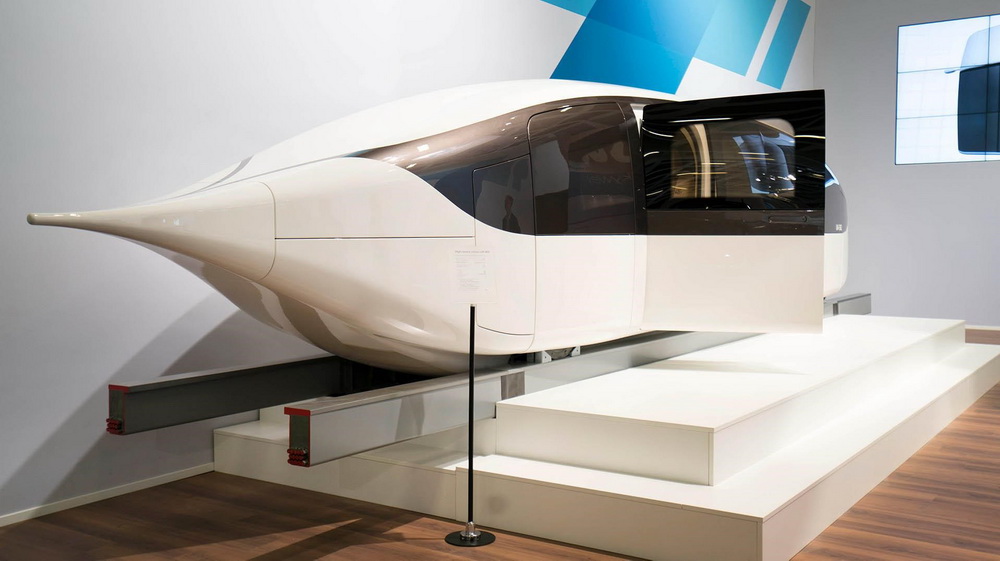On the official website of Unitsky String Technologies Inc., there has been released an article highlighting the company's achievements in the development and testing of the high-speed transport.
Alexander Krivitsky, Chief Designer of the high-speed transport complex, has shared the results of the year. We are briefing you on the key points of this material.
About the design bureau «Highspeed Transport Complexes»
The bureau's specialists are creating rail--string transport complexes for electric vehicles moving at speeds of up to 600 km/h. Previously, the bureau developed a prototype of the high-speed six-seat electric vehicle, which was presented for the first time at the InnoTrans exhibition exhibition in Berlin in 2018. The model is now at the UST Inc. Centre in Sharjah.
The exhibition model is primarily intended to showcase the interior, exterior as well as the passenger compartment's level of comfort and its equipment.
The show model is the basis for a self-propelled chassis that replicates the appearance of the high-speed vehicle, but is not equipped with a passenger compartment. This specimen is needed for testing speed and running parameters.
The absence of the compartment is due to the fact that no people can be in the vehicle for the duration of the test. The required load is simulated by the process containers. After testing, the self-propelled chassis can be supplemented with a compartment, like in the exhibition version or already in a new design.
Testing of the highspeed transport
Testing of the high-speed transport takes place at the EcoTechnoPark on a truss rail-string flyover. However, due to the insufficient length, it is not possible to reach speeds above 80 km/h on this section.
The tests mainly involve components and units of the vehicle. For example, the hydraulic system, the pneumatic system, as well as the control and current collection systems are being tested.
It is important to bear in mind that the bureau is developing not just vehicles, but a high-speed transport complex as a whole. The company's experts therefore also check the operation of the track structure, the anchor and intermediate supports, the stations and their auxiliary equipment, as well as the power and automation systems.
New projects of the bureau
The main challenge now is to test the highspeed vehicle at the speed of 500 km/h. For this, there must be built a test track of at least 22 km. Interest in the object, as well as in the technology platform around it, has been expressed in a number of countries. The project is already under negotiation. Once the issue of the territory has been resolved, the construction will take 2.5 years.
The bureau specialists are also developing new projects according to the concepts of the General Designer, the wishes of potential external customers and market needs based on market research. In addition, the parameters of existing electric vehicles are being fine-tuned.
Achievements of the bureau over the past year
– There has been designed a twin-hulled, highspeed vehicle with traction electric motors and support-wheel current collection. This solution has already been patented.
– There have been worked out variations in comfortable passenger seating in the compartment with minimal impact on the length and weight of the vehicle.
– There have been developed solutions for transporting a highspeed vehicle in a 40-foot container.
– There has been determined the minimum distance from the vehicle to buildings and facilities, as well as stations and platforms, taking into account suspension travel, open doors, emergencies and maintenance.
–There have been designed several vehicle variants with sanitary units.
–There has been taken in account the impact of the pandemic and designed single and double insulated cabins as well as separate climate and ventilation systems.
– There was being work performed on a single-hull highspeed vehicle with a capacity of 22 people with a central aisle, luggage compartment and sanitary units.
– There has been analysed the aerodynamics of the transport means with the help of computer simulations and wind tunnel blowdowns.
–There have been designed new systems for wheel supports and suspensions on the rails for new track structure versions.
The nearest plans
The primary objective is to achieve 500-km speed, stabilise all systems and pass certification.

